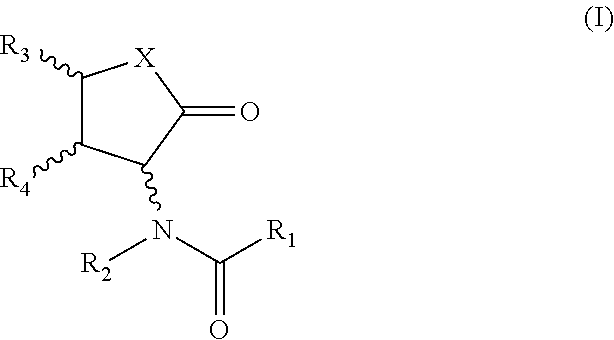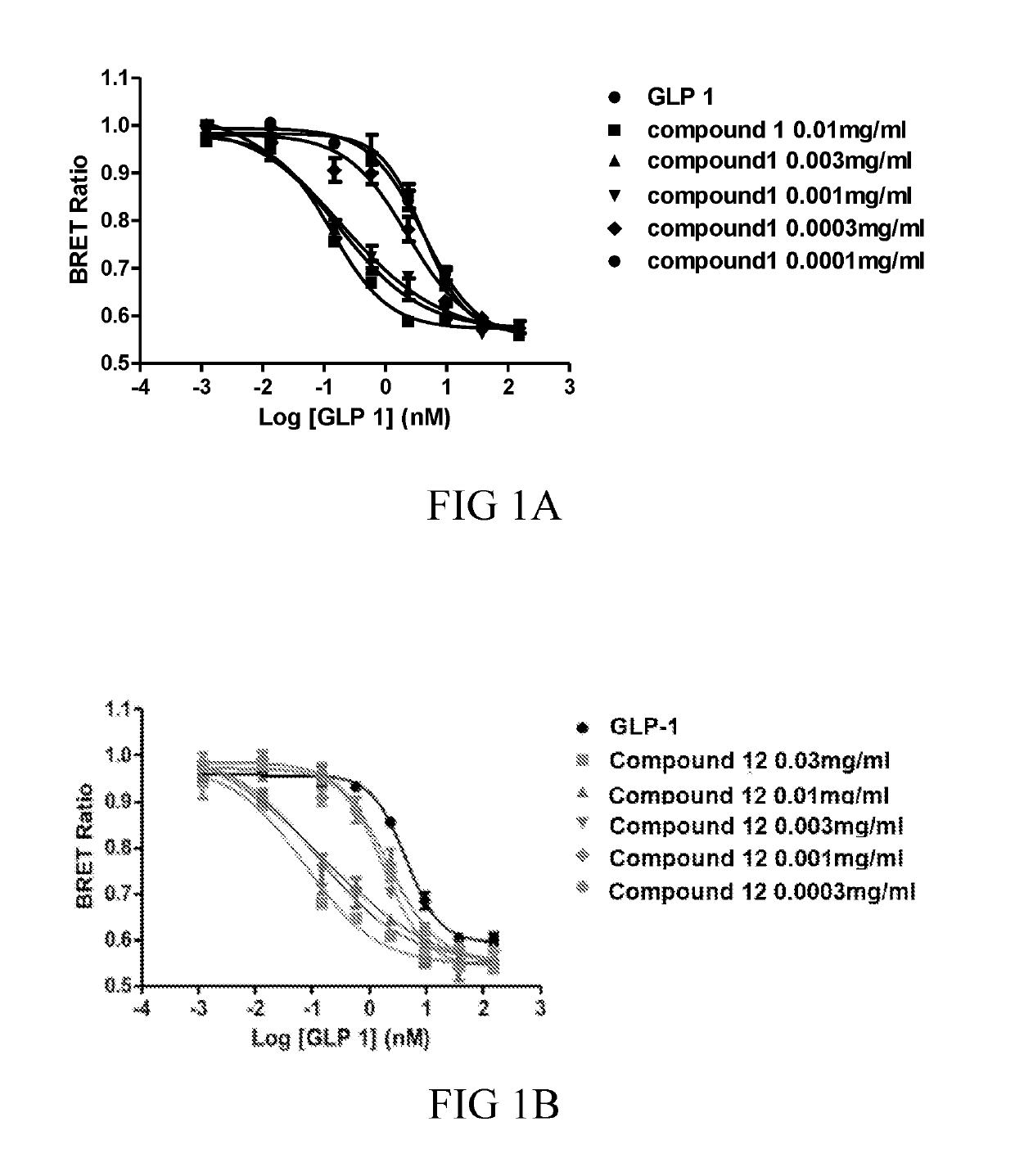Glucagon-like peptide 1 modulator and uses thereof
a glucagon-like peptide and modulator technology, applied in the field of hyperglycemia treatment, can solve the problems of reducing life quality and expectancy, affecting the function of the retina at the back of the eye, and affecting the function of the retina, so as to improve the effect of treatment or prophylaxis, preventing the symptoms of disease and/or disorder, and reducing the risk of cardiovascular diseas
- Summary
- Abstract
- Description
- Claims
- Application Information
AI Technical Summary
Benefits of technology
Problems solved by technology
Method used
Image
Examples
example 1
Preparation of Exemplary Compounds of Formula (I)
[0163]1.1 Synthesis of Compounds of Formula (I-1)
[0164]
[0165]Step 1:
[0166]
Ethyl 2-(4-Methoxyphenylamino)-3-methyl-4-oxopentanoate (A)
[0167]Na2SO4 (10.7 g, 75.0 mmol) was added to a stirred solution of 4-anisidine (3.69 g, 30.0 mmol) in toluene (PhMe) (30.0 mL), followed by the addition of ethyl glyoxalate (6.13 mL, 30.0 mmol, 50% in toluene) within 10 to 20 min. The reaction mixture was stirred at room temperature for 30 min. After the starting material was consumed, Na2SO4 was filtered out by Celite, and the filtrate was concentrated under reduced pressure to give a brown oil that was used immediately for the next step without further purification. A solution of the brown oil in dry dimethylformamide (DMF) (15.5 mL) was slowly added to a stirred solution of butanone (59.0 mL, 660 mmol) and proline (1.21 g, 10.5 mmol) in dry DMF (46.6 mL) over 30 min at room temperature, and the resulting mixture was stirred at room temperature for 12...
example 2
Compounds of Formula (I) Enhances GLP-1 Stimulated cAMP Production
[0197]In this example, the respective effects of a series of compounds of formula (I), including compounds 1 (or N55), 12, 14, 18, and a racemic mixture of compounds 16 and 17, on GLP-1 induced cAMP production in RINm5F cells were investigated, and results are provided in FIG. 1A to 1E. The data indicated that each of the test compounds may enhance the GLP-1R signaling (i.e., GLP-1 induced cAMP production) in a dose dependent manner (FIG. 1A to 1E).
example 3
Characterization of Compound 1 (N55)
[0198]3.1 Compound 1 Enhances GLP-1R Signaling
[0199]Among the compounds of formula (I) tested in example 2, compound 1 (or N55) seemed to possess the most potency and was chosen for further study in this example, results are illustrated in FIGS. 2 and 3.
[0200]GLP-1 induced cAMP production in a dose dependent and saturable manner, with an EC50 of 2.4 nM (FIG. 2, panel A). Compound 1 enhanced cAMP production by shifting the dose-response curve to the left >10-fold, and reduced the EC50 of GLP-1 by a factor of 40, as the concentration of compound 1 increased from 0.8 μM to 26 μM (FIG. 2, panel A). Compound 1 increased the potency of GLP-1 in a dose dependent and saturable manner, with an EC50 of 3.7 μM (FIG. 2, panel B).
[0201]To further elucidate the action of compound 1, GLP-1 receptor endocytosis was performed, and results are provided in FIG. 3.
[0202]It was found that compound 1 at a concentration of 7.7 μM significantly shifted the dose-response ...
PUM
| Property | Measurement | Unit |
|---|---|---|
| density | aaaaa | aaaaa |
| concentrations | aaaaa | aaaaa |
| frequency | aaaaa | aaaaa |
Abstract
Description
Claims
Application Information
 Login to View More
Login to View More - R&D
- Intellectual Property
- Life Sciences
- Materials
- Tech Scout
- Unparalleled Data Quality
- Higher Quality Content
- 60% Fewer Hallucinations
Browse by: Latest US Patents, China's latest patents, Technical Efficacy Thesaurus, Application Domain, Technology Topic, Popular Technical Reports.
© 2025 PatSnap. All rights reserved.Legal|Privacy policy|Modern Slavery Act Transparency Statement|Sitemap|About US| Contact US: help@patsnap.com



